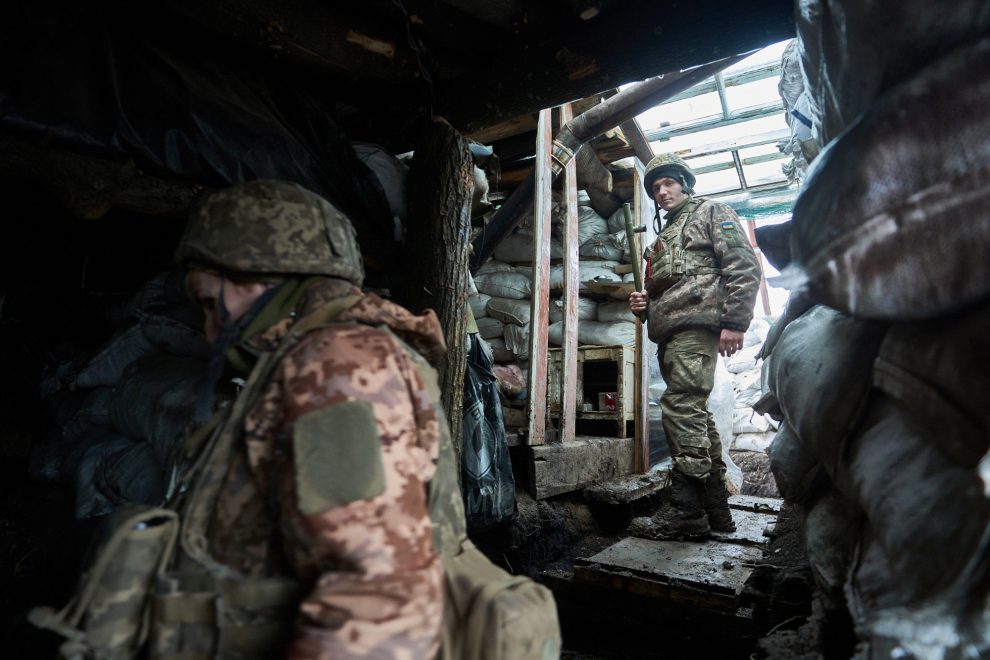Aid to Ukrainian forces is achieving more than the long U.S. intervention in Afghanistan did. American military aid to Ukraine has been remarkably effective, especially in comparison with the long, ill-fated U.S. military intervention in Afghanistan.
A recent statement by General Mark Milley, the chairman of the Joint Chiefs of Staff, helps explain why. “Ukrainians are not asking for anyone to fight for them,” Milley said. “They don’t want American soldiers, or British, or German, or French, or anybody else to fight for them. They will fight for themselves.” The Ukrainians want only the means to defend themselves against Russian invaders, he said, adding that the United States would provide support “for as long as it takes.” By providing advanced weaponry and reliable intelligence, the United States and its allies have allowed Ukraine to inflict large losses on Russian armed forces and roll back earlier Russian territorial gains.
America’s failure in Afghanistan, by contrast, seemed so complete in 2021 that it may have encouraged Russian President Vladimir Putin to launch his full-scale invasion of Ukraine. The American response to this year’s crisis—providing a high level of military support without deploying American forces—is not just the best way to help Ukraine secure its independence and thwart Putin. It also offers a model for how the U.S. should define its international military involvement.
Although the decline of U.S. power has been significantly overstated in some quarters, America’s economic decline relative to the rest of the world is real. Economic strength and technological strength have become more dispersed around the globe, and over time military strength is likely to follow the same pattern. This is one reason avoiding boots-on-the-ground interventions will become ever more of an imperative. The presumption that the U.S. needs to deploy ground forces in a fighting capacity if it wants to achieve meaningful results from interventions has been evident again and again since the 1980s. Yet the reality has often been the opposite. The more the U.S. takes over and inserts its own forces into a conflict, the more expensive and, in most cases, counterproductive the intervention becomes. Such conflicts are also more polarizing for American society—as U.S. involvement in Vietnam, Iraq, and to a lesser extent, Afghanistan demonstrates. Meanwhile, avoiding ground wars but relying on financial aid, advanced technology, intelligence, and even diplomatic coordination and outreach is something the U.S. actually can do effectively.
The shambolic withdrawal of U.S. forces from Kabul—after two decades of effort, many billions of dollars, and many civilian and military deaths—ended one of the most counterproductive and wasteful interventions that the U.S. has ever staged. Americans had lavished resources on the official Afghan army, but it put up only the meekest of resistance to the advancing Taliban before melting away. Some Afghan soldiers even changed sides. Within days after the U.S. departure, the Taliban, which the Americans had deposed in 2001, returned to power—making the U.S. look demoralized and indecisive to, among other observers, the Russian government. When combined with an ongoing American strategic pivot toward emerging conflicts in East Asia, the outcome in Afghanistan seemed to preclude a strong U.S. intervention on Ukraine’s behalf. Indeed, many commentators argued that helping Ukraine would be pointless, because an American commitment would not make a material difference in stopping the Russian assault.
But in fact, the U.S. has helped the Ukrainians not only resist the initial onslaught, but begin driving Russian forces back. Washington has provided the Ukrainian armed forces with a range of equipment, including both supplies for individual soldiers, such as body armor and small arms, and large, sophisticated weaponry, including High Mobility Artillery Rocket Systems. Ukrainian forces are also receiving expedited training and regular support—from outside Ukraine’s borders, notably—on how to maintain and repair American-made military equipment. The extensive real-time intelligence cooperation between Washington and Kyiv has given the Ukrainian military the ability to strike vital Russian facilities quickly and effectively.
Impressively and somewhat surprisingly, the kind of intervention that the U.S. has overseen in Ukraine has helped reinvigorate NATO. The alliance, which seemed close to moribund a year ago, has a renewed sense of purpose and will soon gain two strategically important members: Finland and Sweden. Being a member of NATO now looks like a great strategic asset—as Ukraine’s desire to join it demonstrates. Western assistance for Ukraine has been so effective that some voices are now arguing Ukraine must be restrained by the U.S. and forced to negotiate, lest the war become too embarrassing for Putin.
The differences between America’s roles in Ukraine and Afghanistan suggest a rule for the future: The United States should avoid direct fighting overseas to the extent possible and should intervene in wars only to support peoples and nations that want to fight for themselves. Ukrainians have fought for their country with tenacity and skill, mastered complex weapons systems at their own initiative, and maintained high morale. The U.S. is aiding them, but it is the Ukrainians—everyday soldiers, senior generals, civilians under bombardment, top government officials, and diplomats marshaling international support—who are ultimately determining their own fate.
Although the 2001 U.S. intervention in Afghanistan received early support from multiple Afghan factions, U.S. forces bore the burden of exercising military control as time passed. The abortive attempt to create a new Afghan army yielded a force apparently lacking independence of thought and action. The same seems to have been the case for the U.S.-backed Afghan government, which was unable to command the loyalty of enough Afghans to hold power without American military support.
Sadly, the U.S. frequently forgets lessons from history. In Vietnam, the U.S. ended up sabotaging its own efforts by gradually sidelining the army of South Vietnam and regularly undermining the South Vietnamese government’s legitimacy. In replacing local forces, American military leaders reasoned that more U.S. involvement would achieve key goals, without appreciating how the deployment of more American personnel reshaped and complicated the conflict.
Many of America’s greatest Cold War successes derived from helping one side in a conflict rather than sending U.S. troops to fight. In the 1980s, after the Soviet invasion of Afghanistan, American aid to the local mujahideen was extremely effective in helping them repel a far more technologically advanced military power. Elsewhere, aid to dissident groups opposing communism in Eastern Europe paid off handsomely. Basic support ultimately helped make the struggle for political rights in Eastern Europe impossible for a declining Soviet Union to manage.
While the downsides of direct deployment of U.S. troops have grown clearer, the benefits of showing restraint and scaling American intervention to help others fight for themselves have grown. The lessons of Afghanistan and Ukraine should inform American planning about, for instance, how best to help Taiwan defend itself against a future invasion from mainland China. As the Ukrainians have shown, American equipment is often generations better than that of other powers. Decades of heavy investment in satellites and other intelligence-collection devices have allowed the U.S. to provide support in a variety of ways. The war in Ukraine proves that the U.S. can provide more effective strategic aid than any other country in the world—without necessarily having to rely on sending its own troops.
Source : The Atlantic















